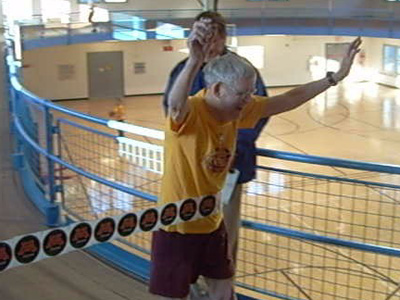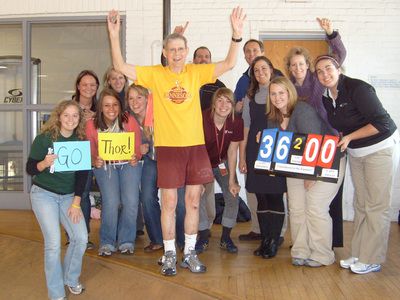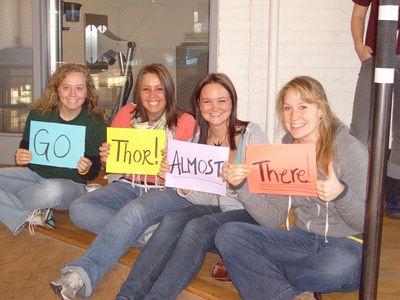It seemed like a good idea back in the ’60s when Thor Kommedahl, a former University of Minnesota faculty member in the Department of Plant Pathology, decided to chart how far he jogged each day. He looked up how many miles it would take to jog around the world.
“I found the mileage around the equator and I thought I’d keep going for that,” he said today. He recently met his goal when he jogged his 24,902.55th mile around the University of Minnesota gym. “Of course it took a long time. I’m sure a lot of these marathon runners have done it but they haven’t recorded their mileage.”

Let’s do the math on that. He was 47 years old back then. “Normally if you run four miles a day, five days a week, you can run 1,000 miles a year and it’d take you 25 years to run around the world,” he said. That’s if you don’t factor in the fact that you’re getting older and running four miles a day is a near impossible feat for that long.
Thor Kommedahl is 89. He’s still running.
He didn’t realize that achieving his goal of running the equivalent of around the world was doable until he got to around 15,000 miles in his 70s. “I got to thinking I could live long enough to do that. I kept looking at the equator as a goal and to keep on going. Even though I got into my 80s. Fortunately I’ve had good health and have been able to go to the gym and do that.”
“Obviously, I don’t run as fast or as vigorously as I did when I was younger. I used to run four miles a day,” he said today. “In my early 80s, I’d run three miles a day and now I’m down to two miles a day.”
He’s seen a lot of changes at the gym over that time. When he started hardly anybody else was jogging. Then Kenneth H. Cooper wrote the book, Aerobics, and “it was like you almost couldn’t get a locker anymore. Jogging was kind of a fad there for awhile,” he said.
He doesn’t see as many people jogging as he used to; it might because more people are using machines, now. “Running around the gym is kind of a boring event,” he acknowledges. “You’re just running in circles, but the social part is kind of fun. There are other people there who are running. The gym is a very friendly atmosphere.”
Especially if you have a cheering section:
Mr. Kommedahl is still running his two miles a day.
“I’d like to go to 25,000 because 24, 902 isn’t an even number,” he said. “So at least I’d like to run to 25,000. I just want to keep going for my health. I feel good from running. I sleep better. I eat better. I recover better from minor illnesses. I just think it’s a good healthy program.”
On Friday at 2 p.m., the university will honor Mr. Kommedahl with a party and a plaque.
Audio
· How he achieved his goal.
· The original goal was 1,000 miles per year.
· What’s the next goal?
· Was there any point where he didn’t think he’d make his goal?
· The changing nature of exercise.
(Photos courtesy of the University of Minnesota)


